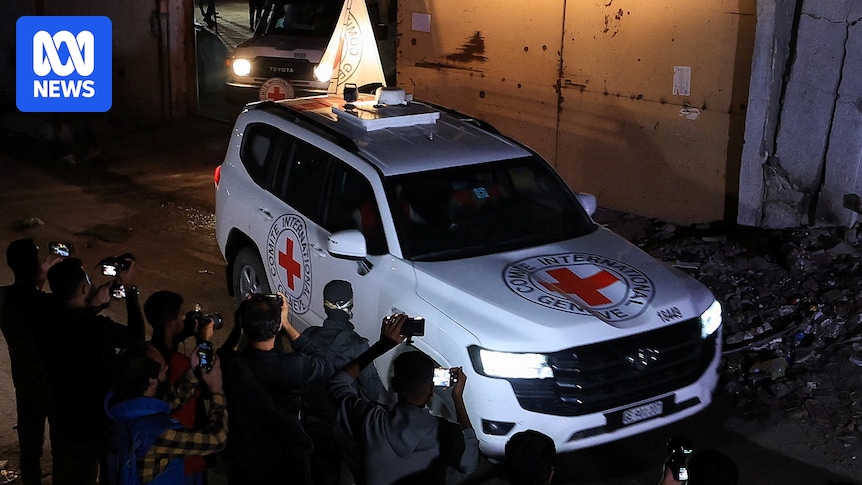
The Israeli military announced that one of the four bodies handed over by Hamas on Tuesday night does not belong to any known Israeli hostage. The remains were taken to Israel’s National Forensics Institute in Tel Aviv for examination and identification.
While three of the bodies have been identified as Uriel Baruch, Tamir Nimrodi, and Eitan Levi, the fourth body remains unidentified. The Israel Defense Forces (IDF) stated that “Hamas is required to make all necessary efforts to return the deceased hostages.” Israel has been eagerly awaiting the return of the bodies of 28 dead hostages.
Hamas Handover and Ceasefire Violations
The handover of the four bodies followed Israel’s accusations against Hamas for violating the ceasefire agreement by not returning all 28 deceased hostages’ remains. In response, Israel announced it would halve the number of humanitarian aid trucks allowed into Gaza as a form of punishment.
With the latest announcement that one of the bodies does not match any of the hostages, the remains of 21 Israeli hostages are still believed to be in Gaza. Hamas has indicated that locating the bodies is challenging due to the extensive rubble, a concern echoed by US President Donald Trump, who facilitated the ceasefire agreement.
Previous Incidents and Identification Challenges
This is not the first time Hamas has returned incorrect remains. Earlier this year, during a ceasefire, Hamas handed over what it claimed were the remains of Shiri Bibas and her two sons, along with another individual. Forensic tests later revealed the remains belonged to an unidentified Palestinian woman, not Mrs. Bibas. Hamas subsequently returned the correct remains, attributing the mix-up to an unintentional error.
Humanitarian Aid and Border Crossings
Despite threats to limit aid entry following the hostage dispute, Israel decided to proceed with opening the Rafah crossing between Gaza and Egypt. An Israeli security official confirmed that preparations were underway to open Rafah to Gazan citizens, while another official stated that 600 aid trucks were scheduled to enter Gaza.
On Wednesday, a convoy of aid trucks, including fuel tankers and pallets of supplies, began moving from the Egyptian side of the border into Rafah. However, it remains unclear if this convoy will complete its crossing into Gaza as part of the 600 trucks planned for the day.
“Humanitarian aid continues to enter the Gaza Strip through the Kerem Shalom Crossing and other crossings after Israeli security inspection,” stated an Israeli security official.
Israel’s public broadcaster, Kan, reported that the aid deliveries would include food, medical supplies, fuel, cooking gas, and equipment for repairing vital infrastructure. Rafah is also expected to open for Palestinian inhabitants of Gaza, allowing them to enter or exit the enclave. However, Gazans awaiting medical evacuation reported not receiving notification from the World Health Organization to prepare for travel.
Ceasefire Stability and Future Prospects
The ongoing dispute over the return of bodies poses a potential threat to the fragile ceasefire agreement. The US-led 20-point peace plan includes the disarmament of Hamas, a condition the group has resisted until the creation of a Palestinian state.
In recent days, Hamas has intensified its security measures, conducting public executions and clashing with local clans to maintain control in Gaza. Meanwhile, President Trump has warned Hamas that disarmament is non-negotiable.
“If they don’t disarm, we will disarm them. And it will happen quickly and perhaps violently,” President Trump declared at the White House.
Long-term elements of the ceasefire plan, such as governance of Gaza, the composition of an international force, and steps towards establishing a Palestinian state, remain unresolved. The ceasefire has temporarily halted two years of intense conflict in Gaza, which began with the October 7, 2023, attack by Hamas-led gunmen that resulted in approximately 1,200 deaths and 251 hostages taken to Gaza.
According to local health authorities, Israel’s military actions have resulted in at least 67,000 deaths in Gaza, with thousands more feared buried under rubble. Gaza’s Civil Defence Service reported recovering 250 bodies since the truce began.





